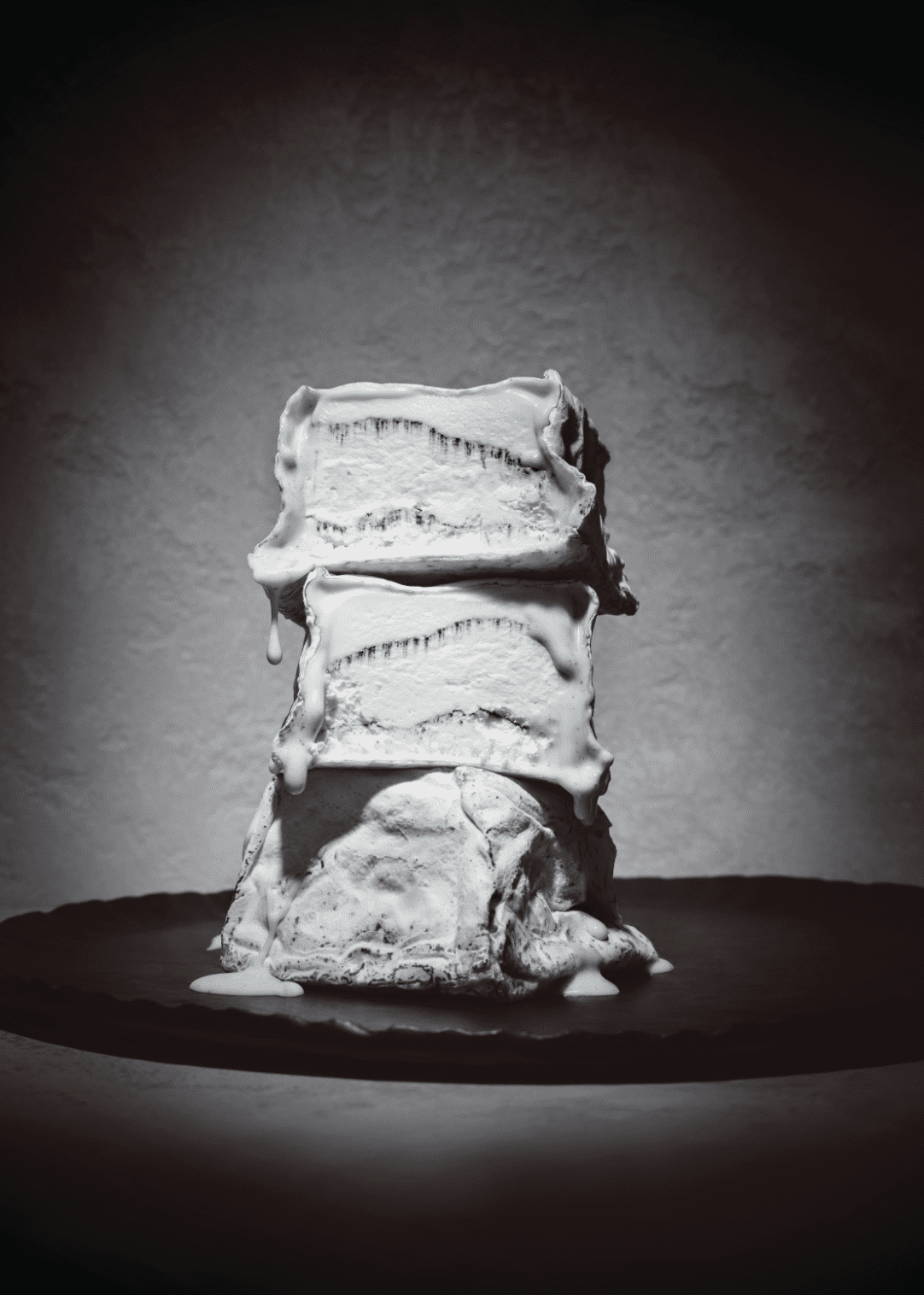
Photographed by Adam DeTour; Styled by Catrine Kelty
Capriole may have an Indiana address, but it’s Chicago, not Indianapolis, that put Judy Schad’s now-legendary goat cheeses on the radar of chefs and turophiles. Just as Schad was getting her sea legs raising goats and making cheese, Sofia Solomon was launching her caviar and smoked fish importing business, Tekla, in the Windy City. The two women connected on a trip to France, where Schad picked up loaf-shaped molds used for pate, which she ultimately used to shape Sofia, named for her friend. As with all of Capriole’s cheeses, the curd is hand ladled. “Because of that it ripens a little differently and it’s lighter than most ripened goat cheeses,” says Schad. As the molds are filled, the cheesemakers sprinkle ash in layers for a softly marbled effect; there is also ash surrounding the cheese. “At first we did it just because it was pretty, but it also helps to reduce the acid.” Sofia’s distinctive wrinkly surface and sweet, lemony scent are created by Geotrichum candidum, a mold Schad encountered in France. At Capriole, Sofia goes into a mold-specific aging room for two weeks or less before being shipped in poplar crates made by a local farmer. The cheese changes character as it ages, becoming mellower with a rich, runny cream layer underneath the rind.
“I think it’s a really unique cheese—even in the panoply of European cheese—because of the texture and the rind. And that’s because we do things crazy.”—Judy Schad
Unable to find Geotrichum candidum commercially in the U.S., Schad reached out to Sister Noella Marcellino (a.k.a the cheese nun), who told her to put a pail of milk out in her cheese room: when a wrinkle appears on top, that is the mold.



